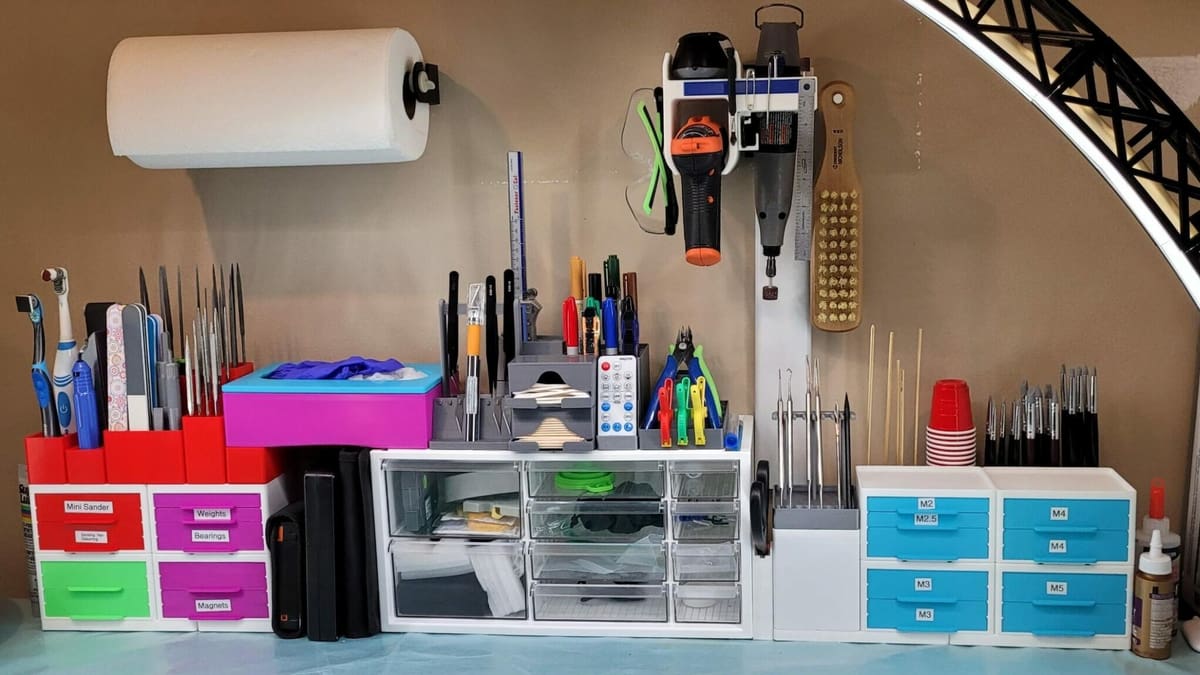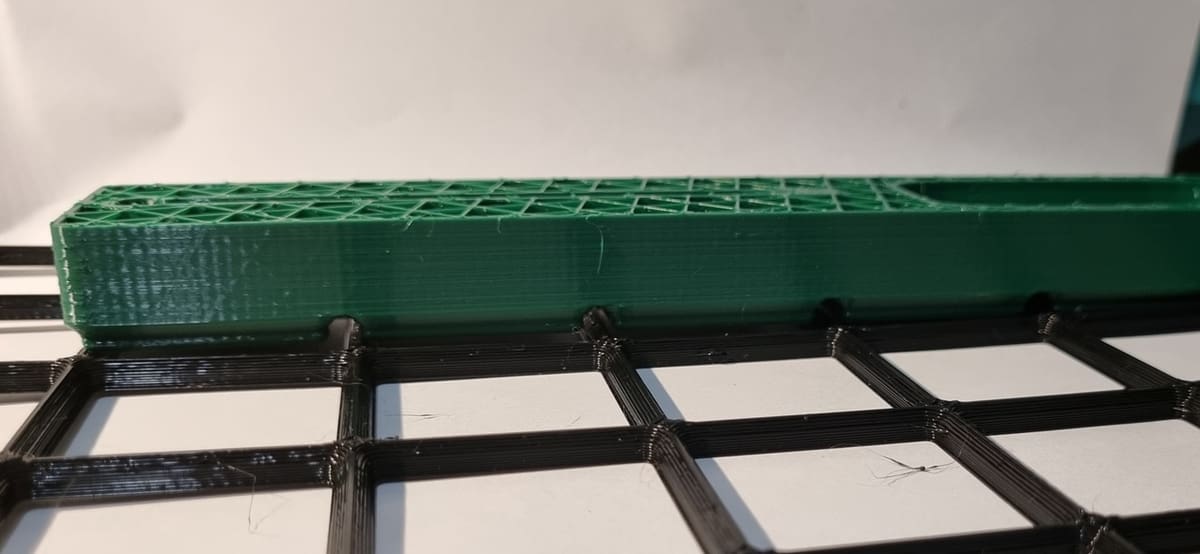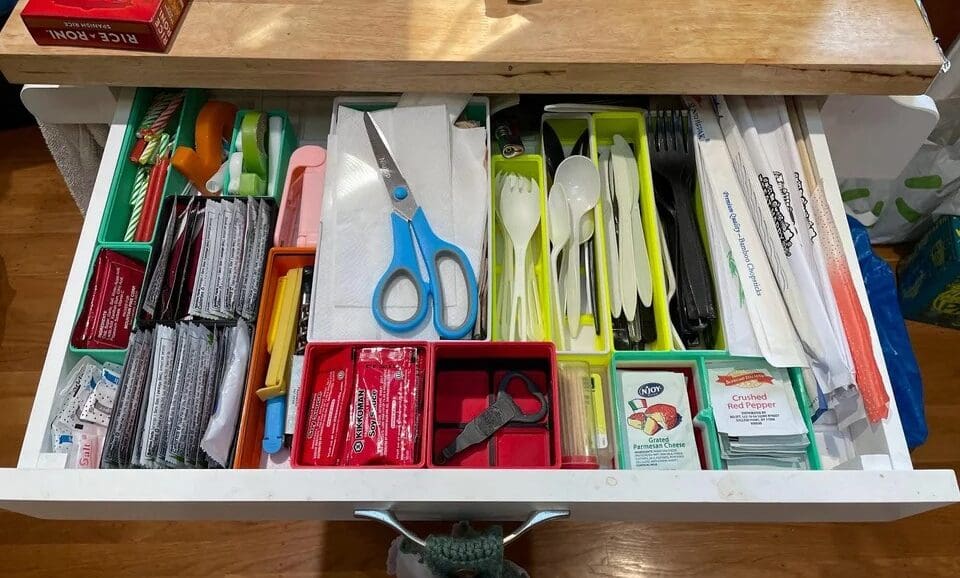If you’re into 3D printing, you’re probably a tinkerer at heart with several kilograms of spare nuts, bolts, and electronics modules. Or maybe you’re in it for the printed figurines, so you have an extensive art supply box. Either way, if you’re anything like us, these tools and supplies have accumulated in spare “stuff” drawers.
And no matter how many times you’ve cleaned up your workspace, it ends up in a similar state of disarray within a month or two. Sometimes, you may even find yourself in the situation where the tool you need is in the drawer on the other side of the room. So, you either use the wrong tool for that quick job or a temporary workspace appears right next to where the proper tool is stored. We can all relate.
Imagine a professional setup for whatever kind of work you’re doing. You’re probably picturing all the necessary tools and parts within easy reach, each having its designated home. You may also picture a steep price tag for such a setup and how it may be bulky and inflexible when you want to use your same workspace for other tasks.
Well, let us let you in on a little, not-so-secret solution you’ve probably already heard of that can turn your workspace into a swiss army knife of professional workspace setups. It’s called “Gridfinity”, and it can change your workspace game if you use it correctly. Let’s get into it!
The Gridifinity Philosophy
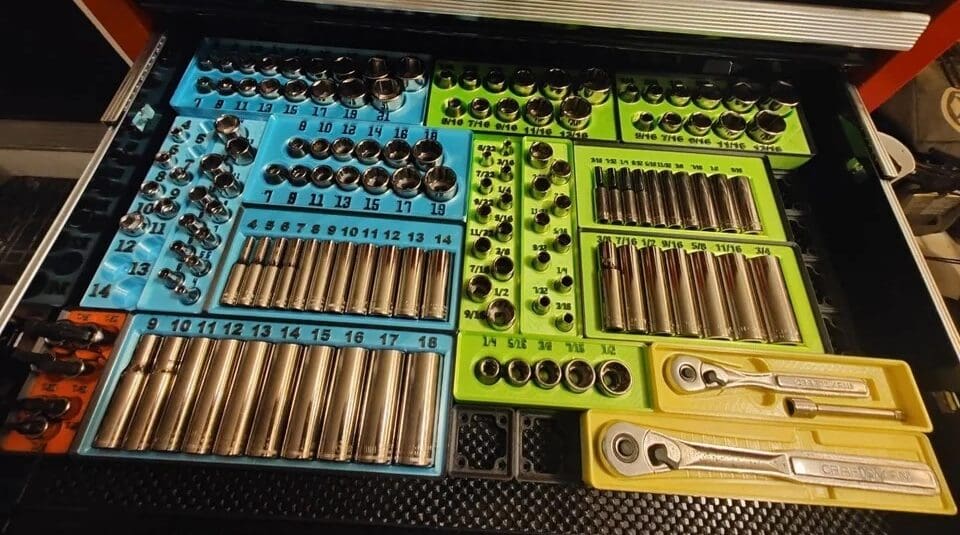
Zack Freedman, the creator of Gridfinity, was once a professional freelance prototyper, but now, he’s a full-time YouTuber who puts out super interesting projects and tutorials mostly related to 3D printing and electronics. He introduced Gridfinity as an organizational system that’s designed to meet a need, one which most people mistake as “small parts storage”. Instead, it’s designed to help you finish projects, reset to clean instantly, and reconfigure on the fly.
So, we’re not talking about something to help you store more stuff. We’re talking about a storage system that allows you to see and access your tools or parts where you’ll use them (and put them away after use). The defined philosophy for Gridifinity is that every item has a dedicated home that:
- Is within reach of where you’ll use it,
- Is exposed and easy to grab,
- Prevents accidents like spills and injuries, and
- Is effortless to set up and super easy to put back or rearrange.
Think of your kitchen drawers. Are the teaspoons at the back of the bottom drawer? Or are they front and center of the top drawer that’s nearby the coffee machine? This is how Gridfinity is designed to work.
Because there’s no way to tell what tools, parts, or projects you have, Freedman designed Gridfinity as a standard – in other words, a set of rules for designing a component that will fit with any other Gridfinity component. He published several example components when he announced the system via YouTube, but these are only examples, and he called upon the community to improve his designs and come up with new ones. And boy, did the community answer his call.
New component designs have been popping up all over the place, including for spaces beyond the workbench like the bathroom and kitchen. So now, let’s get into how this system actually works and how to apply it to your space!
How To Get Your Grid On
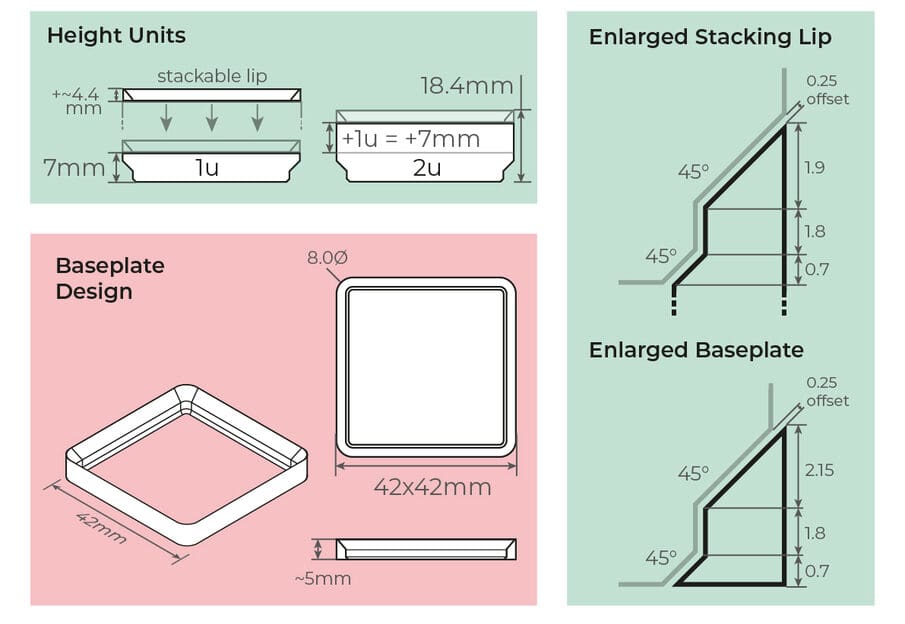
As we mentioned, Gridfinity is a standard, not a product. A Gridfinity-compliant storage solution fits within a baseplate made up of 42-mm squares. So, every component has a width and length that is some multiple of 42 mm. For example, a 1 x 2 component is 42 x 84 mm, and a 4 x 5 component is 168 x 210 mm.
The height of each component follows a similar standard being a multiple of u, equal to 7 mm. The smallest height is 2 u, or 14 mm, as the base that locks into the grid is 7 mm (1u) and needs at least a 7-mm wall on top. This system of multiples allows you to easily stack components on top of each other securely (or if you’re just irked by uneven heights).
Freedman designed two baseplate varieties for his initial release: a weighted base and an open grid. The weighted base has space to glue magnets so that bins with magnetic bases can be secured in place. The open grid is thin enough that bins with magnets would also be able to attract to a steel drawer or surface.
The additional magnets and weights are optional, though. The design of the grid interface is such that you only really need magnets or weights for particularly top-heavy things like these pick and tweezer racks.
Since the original release, others in the community have expanded the baseplate options with designs such as a lightweight magnetic version or a screw-together version to enable smaller grids to be securely connected together.
As for the components, Freedman’s original examples were fairly generic, but with community involvement, there’s now a huge variety of different components to suit nearly any purpose. Of course, if there isn’t a part to suit your needs, the parametric source file is available for Autodesk’s Fusion.
Printing Tips
Freedman printed his original setup using an Anycubic Kobra Max outfitted with a Volcano-style 0.4-mm nozzle to give a 0.6-mm line width. Though, he hasn’t specified a particular layer height or temperature. Not to worry, we have even more pointers for you from our personal Gridfinity journey:
- Use a larger nozzle, like 0.6 mm or 0.8 mm, for faster prints. Gridfintiy models don’t need a lot of fine detail.
- Use hotter temperatures for better layer adhesion. When working with eSun PLA+ at 55 mm/s on a Creality CR-10 S with a 0.6-mm nozzle, 215 °C was a good fit.
- Use sufficient infill. Around 15-25% should suffice. This doesn’t significantly increase print time because there’s not a large area within the model that infill even applies to (given the models are generally hollow), but it definitely helps with warping.
- Calibrate and recalibrate your X & Y E-steps until they’re perfect, or you may lose your mind. There’s nothing more frustrating than your components not fitting by a margin.
- Stick to 0.8- to 1-mm top and bottom thickness. It’s plenty, no need to use more filament.
- Do not (and this is super important) put too much thought into how to further optimize your layout before hitting print. You can easily get lost in details and planning before you know it. Months will go by, and you’ve printed nothing. The bins don’t use much plastic, so you can print new ones. Stop thinking about it.
Luckily, Gridfinity has an active community, and The Next Layer has a very thorough video covering tips for successfully employing Gridfinty. This community not only helps with getting the prints right but also means that there are a lot of options when it comes to components that suit your needs.
Endless Options
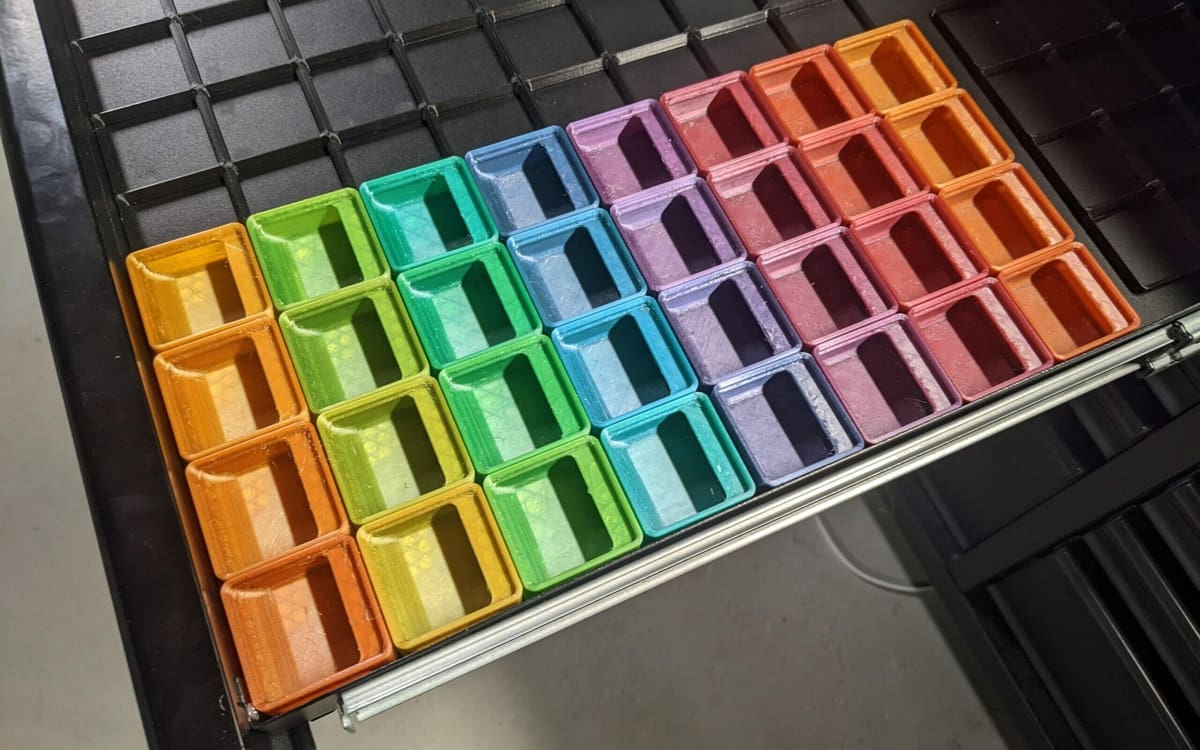
If each tool has a cozy little home near where you use it, you’re more likely to return it rather than leave it where you used it. This system won’t do much more than pleasingly organize items for neat people, but if you’re messy tinkerers like many on the All3DP team, the system will help keep you from turning your workspace into a shambling mound of tools and unused parts.
Gridfinty was designed to make your tools and parts more accessible to you while you work, so the best place for it is on the workbench. Use grids, standard storage bins, and more specialized or custom accessories to lay out the tools for your current project.
For example, with electronics projects, you might lay grids out in a U shape around your workspace with primary tools like side cutting pliers and a soldering iron to your dominant hand, with helpers such as tweezers near your non-dominant hand. Across the back, place things like solder reels, flux, and sponges for cleaning the soldering iron.
Of course, that’s only an example layout. The idea is that you would change the layout depending on what works for you on that specific day. Remember that the system is designed to help you clean up too. So, once you’re done, all your tools can be quickly put away because they have a designated home.
Off the Bench
Not everything you use will be used in a workbench-like space, and not every place where (as Freedman puts it) “the stuff that makes the stuff is stuffed” is a drawer. Gridfinity has a raft of modules for specific purposes. For example, there’s one for your 3D printing setup that has a place for all the essentials like calipers, tools, spare nozzles, and glue sticks. Naturally, there’s also a mount to directly attach your components to just about any 3D printer.
Other specialty components include things like USB sticks and SD card holders. Again, the philosophy is that “if it’s kept next to where it’s needed and neatly displayed, you will a) use the correct tool and b) return it to its stowage when you’re finished with the job”.
Even with workbench drawers and printer-mounted items, your stuff might not “have a home within reach of where you will use it”. To achieve this, you may need to add another dimension to your Gridfinity: Wall racks allow you to create a whole wall of Gridfinity modules. And if that isn’t creative and useful enough for you, there’s a carousel.
Beyond the Workshop
Who said that organization is only for the workshop? The kitchen is yet another place where people have employed Gridfinity, like for that teaspoon situation we mentioned. Larger bins make excellent organizers for that second utensil drawer. You know the one: It’s got all the tongs, spatulas, and some very dangerous sharp implements like scissors or cheese graters just waiting to attack you. With a few larger bins, all of a sudden that drawer is much safer (and you can find your favorite cheese knife again).
People have applied Gridfinity to their bathrooms, their work desks, other hobbies, and even to their Gridfinity using Mini-finity. There’s even a Gridfinity-compatible tabletop solution if you’re into tabletop role-playing games like Dungeons and Dragons. If you, like most of us, have stuff and things, there’s a way to apply Gridfinity to organize it.
Remember we mentioned that Gridfinity has an active community? Most of the more esoteric applications were developed by members of that community. But how do you find those people?
The Community
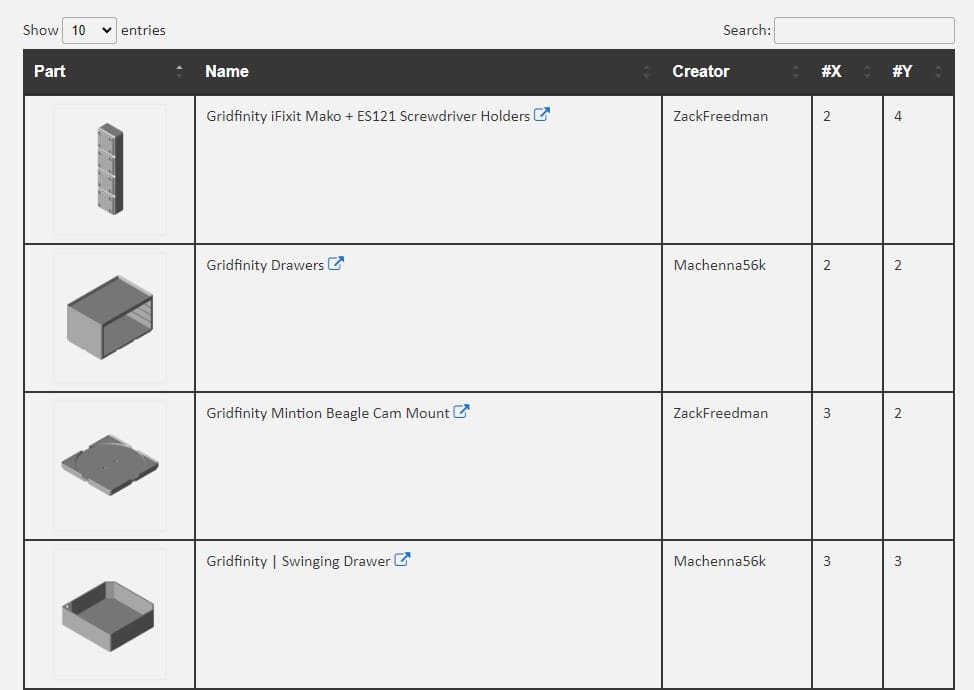
When Freedman announced Gridfinity, a community sprang up almost overnight. As the system was open source, new designs and improvements on Freedman’s originals were posted to all of the usual places: Thingiverse, Printables, Thangs, and so on.
If only all the parts had some kind of central library – a single page that had a library of all the parts and the specifications for designing new parts. Well, there is, sort of. Gridfinity.xyz is a dedicated page for the Gridfinity project, though the library sorely needs an update. It also contains the best copy of the specifications we’ve been able to find. Other catalogs have also cropped up on GitHub to help organize all the organizers.
If you want more up-to-date discussions on Gridfinity, Freedman’s #gridfinity Discord channel has an ongoing discussion of all things Gridfinity. You’ll have to agree to the terms and conditions of Freedman’s discord channel, but that’s essentially being polite to other users. If you need any sort of help with your Gridfinity, this is a good place to start!
If you’re more of a “front page of the internet” type of person, there’s also a Gridfinity Reddit page as another place to seek tips and query what has already been designed. With all the community hype, you may be thinking that Gridfinity is unprecedented. Sorry to say, this couldn’t be further from the truth.
Is Gridfinity the Only System?
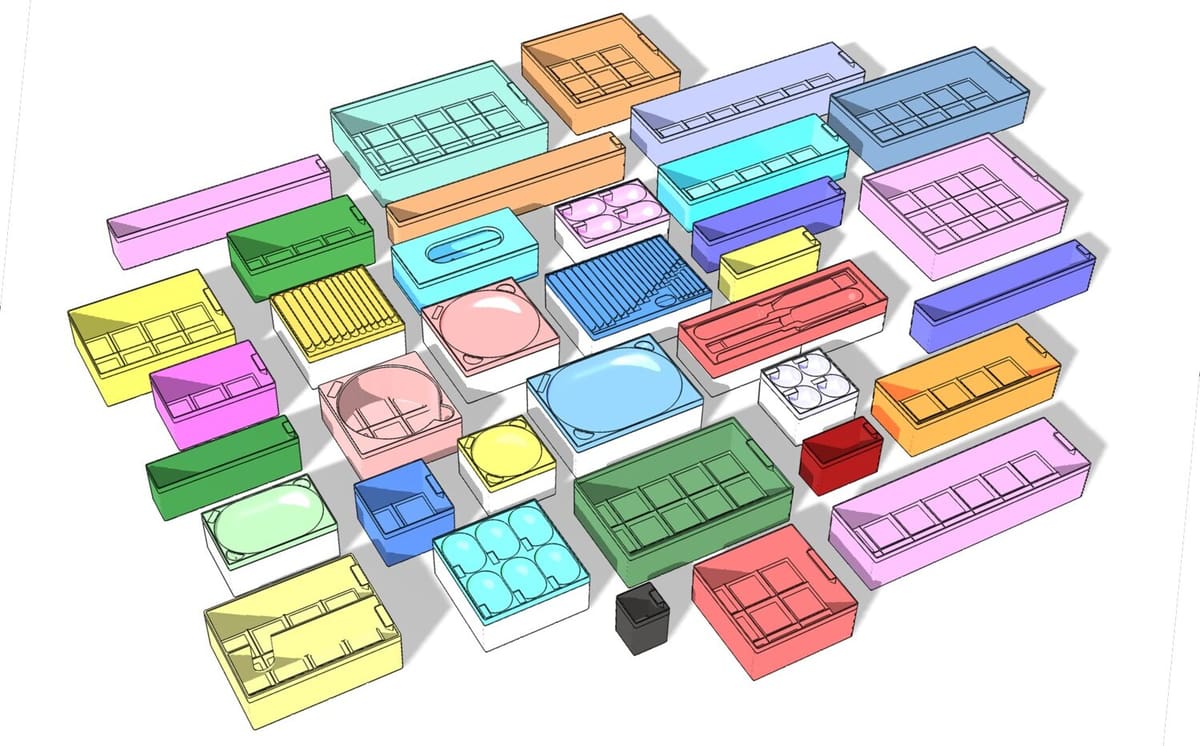
In fact, Gridfinity is based on Alexandre Chappel’s assortment aystem, which is a pay-to-access modular storage system with a closed ecosystem. The system is very well thought out and very flexible, but as it’s not open source, the designs are limited to those that Alexandre Chappel puts out. It does have the advantage of lids functioning as tool trays if your workshop is dusty, for example. Gridfinity tends to also have smaller bins than this system, which was designed for woodworking.
There’s also the Fast Print Modular Storage Drawer System, which could be considered a vertical version of Gridfinity. While it’s not open source, it’s free for personal use. We could easily imagine this supplementing a Gridfinity layout, although there are already drawer modules for Gridfinity…
Another, more vertical option is the HIVE Modular Hex Drawers. These are similar to the fast print drawers except that they’re hexagonal in shape if you’re into that kind of thing. And there’s also a desk honeycomb organizer reminiscent of this design.
While all of these systems will get the job done, they do lack some versatility. This is due to Gridfinity’s community following and open-source nature. And at the end of the day, isn’t it more fun to organize with your fellow makers?
License: The text of "Gridfinity Modular Storage System: All You Need to Know" by All3DP is licensed under a Creative Commons Attribution 4.0 International License.

